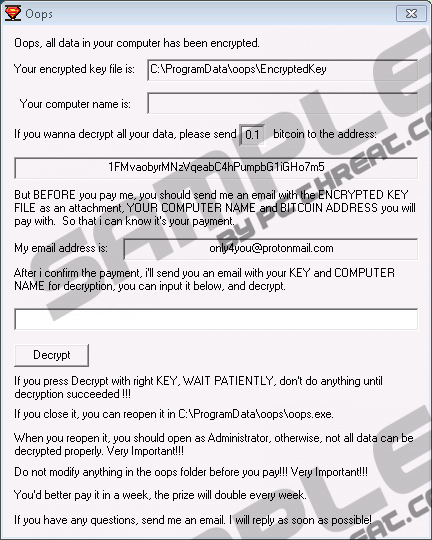
Organizations that can and will pay quickly.Universities fall into this category because they often have less security along with a high level of file-sharing. Groups that are perceived as having smaller security teams.Here are four target groups and how each may be impacted. This targeting ability enables cybercriminals to go after those who can - and possibly are more likely to - pay larger ransoms. But the nature of this file-encrypting malware means that cybercriminals also are able to choose their targets. Ransomware can spread across the internet without specific targets.

Who are the targets of ransomware attacks? This makes ransomware tricky to navigate. Even if you pay, the attackers may never give you the decryption key. While a ransom is demanded, there’s no guarantee your data will be restored if you pay that ransom. This malicious software essentially holds your files hostage, which can wreak havoc on an extremely broad scale for larger organizations. Ransomware prevents you from accessing the files stored on your computer.
#UNINSTALL RANSOMWHERE DOWNLOAD#
How does this happen? It often happens when victims mistakenly download malware through email attachments or links from unknown sources - which happen to be hackers. Ransomware attacks work by gaining access to your computer or device, and then locking and encrypting the data stored on it. Knowing the types of ransomware out there, along with some of the dos and don’ts surrounding these attacks, can go a long way toward helping protect yourself from becoming a victim of ransomware. And if the attackers don’t give you the decryption key, you may be unable to regain access to your data or device. While the idea behind ransomware may be simple, fighting back when you’re the victim of a malicious ransomware attack can be more complex. Those files are still on your computer, but the malware has encrypted your device, making the data stored on your computer or mobile device inaccessible.

Ransomware holds your personal files hostage, keeping you from your documents, photos, and financial information. And since malware attacks are often deployed by cyberthieves, paying the ransom doesn’t ensure access will be restored. In many cases, the victim must pay the cybercriminal within a set amount of time or risk losing access forever. The idea behind ransomware, a form of malicious software, is simple: Lock and encrypt a victim’s computer or device data, then demand a ransom to restore access.


 0 kommentar(er)
0 kommentar(er)
